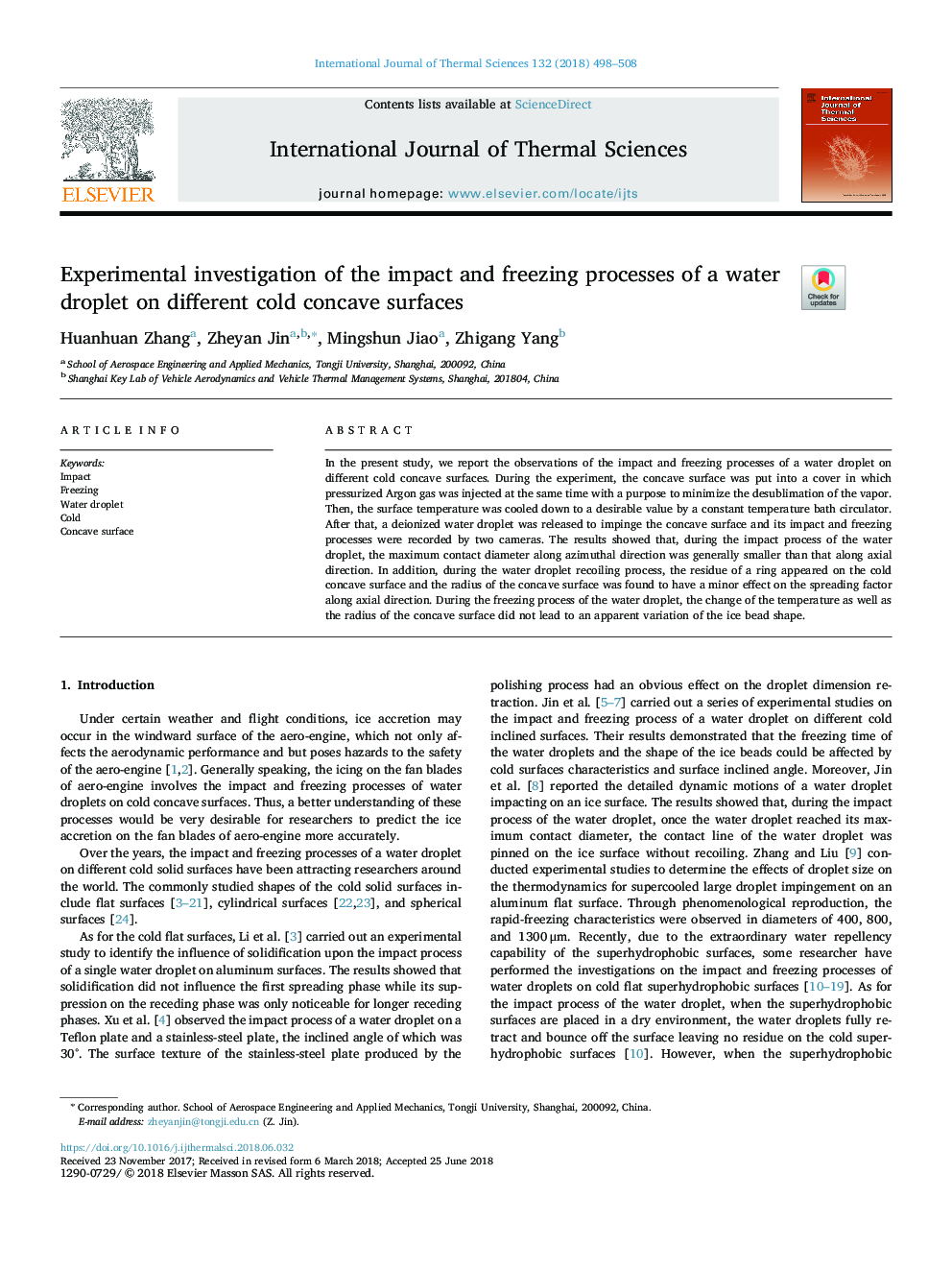| Article ID | Journal | Published Year | Pages | File Type |
|---|---|---|---|---|
| 7060633 | International Journal of Thermal Sciences | 2018 | 11 Pages |
Abstract
In the present study, we report the observations of the impact and freezing processes of a water droplet on different cold concave surfaces. During the experiment, the concave surface was put into a cover in which pressurized Argon gas was injected at the same time with a purpose to minimize the desublimation of the vapor. Then, the surface temperature was cooled down to a desirable value by a constant temperature bath circulator. After that, a deionized water droplet was released to impinge the concave surface and its impact and freezing processes were recorded by two cameras. The results showed that, during the impact process of the water droplet, the maximum contact diameter along azimuthal direction was generally smaller than that along axial direction. In addition, during the water droplet recoiling process, the residue of a ring appeared on the cold concave surface and the radius of the concave surface was found to have a minor effect on the spreading factor along axial direction. During the freezing process of the water droplet, the change of the temperature as well as the radius of the concave surface did not lead to an apparent variation of the ice bead shape.
Related Topics
Physical Sciences and Engineering
Chemical Engineering
Fluid Flow and Transfer Processes
Authors
Huanhuan Zhang, Zheyan Jin, Mingshun Jiao, Zhigang Yang,
